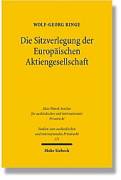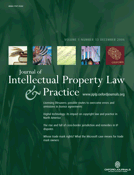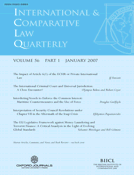German Courts: Scope of Art. 6 (3) Brussels I Regulation
The scope of Art. 6 (3) Brussels I (counter-claim) has not been clarified by the ECJ so far. Also the German Federal Supreme Court has left this question explicitly open in a judgment of 7 November 2001 (VIII ZR 263/00).
Now, the Local Court Trier adopted with judgment of 11 March 2005 (32 C 641/04) a restrictive approach. The Court held that a counter-claim can only be based on Art. 6 (3) Brussels I if the counter-claim arises from the same contract or facts on which the original claim was based; i.e. it has not been regarded as sufficient if the claim and the counter-claim are based on different sales contracts which have been concluded within the context of continuous business relations between the parties. Rather the existence of a framework contract or an apportioned contract is regarded to be necessary.
The Court refers for supporting this restrictive interpretation mainly to the wording of Art. 6 (3) Brussels I which differs from the wording of Art. 28 (3) Brussels I by not regarding a close connection between the actions as sufficient, but rather requiring that the claim and the counter-claim arise from the same contract or facts.
This point of view is in line with the predominant opinion among German legal writers, but has nevertheless been criticised by Michael Stürner (IPRax 2007, 21 et seq.) who argues that it should be possible to bring a counter-claim in the court in which the original claim is pending in cases where separate proceedings may lead to irreconcilable judgments in terms of Art. 28 (3) Brussels I. In contrast to the Local Court Trier he regards the matter in dispute of both proceedings – claim and counter-claim – to be decisive, rather than the existence of an apportioned contract.
The full judgment can be found in IPRax 2007 41 et seq.

 The Honourable Mr Justice Lawrence Collins, co-author of probably the world's most famous work on private international law,
The Honourable Mr Justice Lawrence Collins, co-author of probably the world's most famous work on private international law, 

%5B3%5D.jpg)

